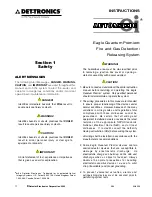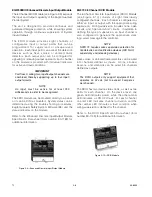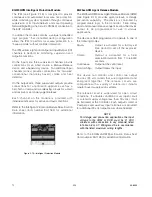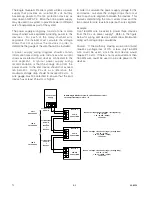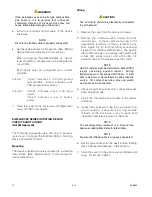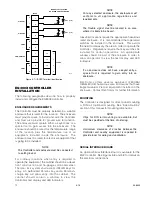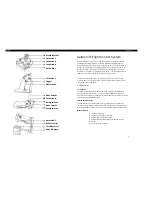
3-1
7.1
95-8533
Section 3
Installation
SAFETY SYSTEM DESIGN
REQUIREMENTS
Many factors need to be considered when
determining proper EQP System design. The following
paragraphs will discuss these factors and other issues
useful in designing, installing and configuring the
Eagle Quantum Premier System.
IDENTIFYING THE AREA OF PROTECTION
In order for the system to provide optimum coverage
and protection, it is critical to properly define the
required “Area of Protection” (total area being
monitored by the system). The area of protection
should include all hazard sources requiring
monitoring, as well as suitable locations for mounting
detection, extinguishing, notification, and manual
devices. In order to accurately define the area of
protection and provide maximum protection, all
potential “Real” and “False” hazard sources must be
identified. The number and location of Real Hazards
determines the extent of the area of protection, and
impacts all subsequent design decisions.
WARNING
!
When drilling through surfaces in the process of
mounting equipment, verify that the location is
free of electrical wiring and electrical
components.
IDENTIFYING WIRING, NETWORK (LON), AND
SYSTEM POWER REQUIREMENTS
General Wiring Requirements
WARNING!
DO NOT open any junction box or device
enclosure when power is applied without first
de-classifying the hazardous area.
CAUTION!
Any deviation from the manufacturer ’s
recommended wiring practices can compromise
system operation and effectiveness. ALWAYS
consult the factory if different wire types or
methods are being considered.
NOTe
All field wiring must be marked per NFPA 70
Article 760.
NOTe
Specific installation requirements may differ
depending on local installation practices and
compliance with third party certifications. For
local installation practices, consult the local
authority having jurisdiction. For compliance
with third party certifications, consult the
appropriate appendix in this manual for
additional installation requirements.
Power Wiring
IMPORTANT!
For deluge and pre-action applications, input
voltage to the DCIO or ARM must be 21 vdc
minimum to ensure proper operation of the
connected output device.
IMPORTANT
To ensure proper operation of field devices, the
voltage input to the device (measured at the
device) must be within the range indicated for
that device in the “Specifications” section of this
manual (18 Vdc minimum).
Summary of Contents for DET-TRONICS 95-8533
Page 128: ...7 1 95 8533 A 4 Figure A 1 System Drawing 007545 001 ...
Page 129: ...95 8533 A 5 7 1 Figure A 2 System Drawing 007545 001 ...
Page 131: ...95 8533 7 1 B 2 Figure B 1 Drawing 007546 001 ...
Page 132: ...95 8533 7 1 B 3 Figure B 2 Drawing 007546 001 ...
Page 134: ...95 8533 7 1 C 2 Figure C 1 Drawing 007547 001 ...
Page 141: ...95 8533 7 1 D 7 Figure D1 System Drawing 007545 001 ...
Page 143: ...APPENDIX E E 1 95 8533 7 1 ...


